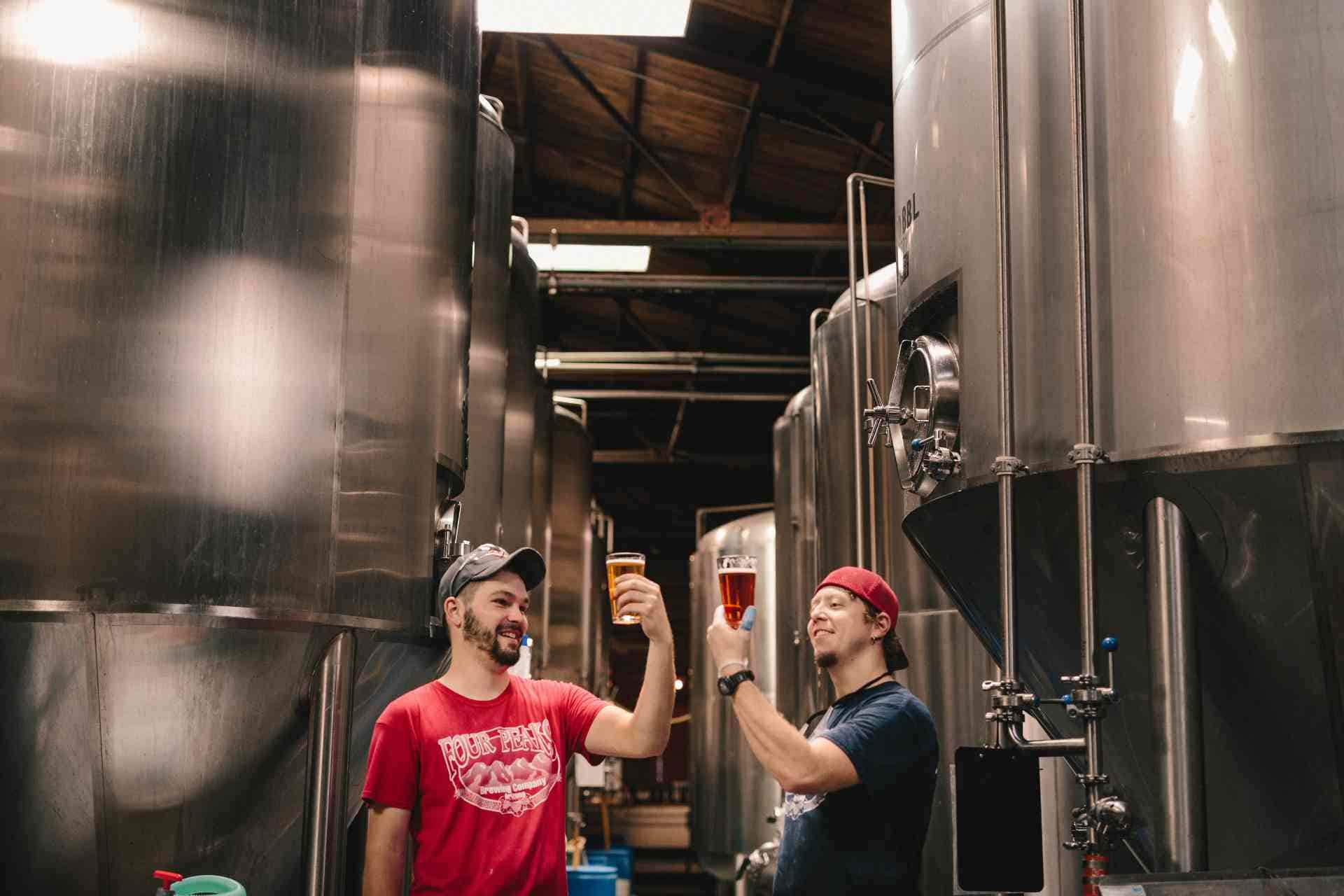

by Jessie O'Brien
Beer is particularly wonderful because it engages all of our senses—sight, smell, feel, taste, and the satisfying crack of opening a fresh cold can. Brewers inherently understand the flavor, texture, and color of their creations, but Lindsay Barr has it down to a science. She is the co-founder of DraughtLab, a sensory technology company that helps manufacturers maintain the quality and consistency of their food and beverage products by collecting and analyzing data. This data is collected through multiple sources, such as expert panels and customer feedback.
Barr got her Master's degree in food science and technology at University of California, Davis before her 10-year stint as a consumer research specialist at New Belgium Brewing. She says all the top food and beverage businesses operate a sensory program. In the past, the level of expertise and money required to launch a sensory program was a barrier for most small to mid-level breweries, but she says it doesn’t have to be out of reach. We talked to Barr about measuring subjectivity, how brewers can improve their sensory skills, and what flavors just don’t belong in beer.
What do you need to measure sensory data?
The great thing about flavor is that the instruments you need are already in your brewery or distillery—they are human beings. Humans are the only appropriate tool to make accurate claims about the holistic perception of a product. We can look at it analytically, and we can look at the microbiological characteristics, but ultimately, in food and beverage, we are looking to sell products to people who like them. Products have to have some measurable flavor characteristics to ensure consistency, but we already have what we need, so that makes sensory study approachable for even the smallest manufacturers.
How do you measure something so subjective?
Sensory science is a science, and you can get objective measurable feedback from participants. There is going to be, of course, a decent amount of variability based on perception. Perception is this whole muddy thing, but with sensory, there is the subjective and objective. We are interested in measuring both.
If you only focused on how much consumers like your product, but have no idea about the attributes that make a product likable, then you would have a really difficult time consistently manufacturing that product. On the flip side, if you only measured the objective parameters—if you knew how much nuttiness was in a product and how much sweetness was in a product—but you have no idea how those flavors impacted consumer liking, then you really don’t have a business at all.
Sensory is capable of measuring both of those things, marrying them together, and then making sense out of the subjective and objective. Part of that is using trained tasters for the objective side, and consumers [for the subjective side].
The majority of people who get into the beer industry do not have any background in sensory. Is that a problem?
There are only a handful of universities that teach sensory science. We estimate there are probably about 2,500 sensory scientists in the US. We estimate that around 84 percent of all food and beverage businesses in the United States go without any kind of sensory program.
Anywhere from 70 to 80 percent of food and beverage products that go to the grocery channels end up failing. What’s interesting is, if you’re not a top global behemoth, your products fail at an 88 percent rate. There are a lot of factors that play into that, but one of them is that all of these large businesses have figured out that sensory can be used, consumer research can be used, and internal tastings can be used to make decisions about their product. So they really have their finger on the pulse of what their consumers think.
How does someone refine their palate and get better at sensory observations?
We often lose sight of the fact that those folks who make the product are already doing sensing. The people who are most qualified to taste their products, even with no training whatsoever, are the people who are making the product because they are intimately connected with it. They already understand it very well, and they will know it better than anyone else.
It doesn’t have to be all that complicated. It can just be a matter of paying attention and being more intentional with how you are tasting, rather than just drinking. Now I’m evaluating the visual characteristics of this product—Is it clear? What’s the color? What’s the foam like? What’s the lacing like? The aroma—I'm intentionally smelling it, tasting it, and feeling it. That extra layer of intentionality can be really useful. And additionally, using standardized flavor lexicons can be very, very helpful. If you give people a standard lexicon that they can use as a guide, describing products is not so scary. We have all had the experience where the flavor you’re thinking of is literally on the tip of your tongue, but you can’t capture it. If you have the tool to guide you there, it makes it way easier to find those descriptors and do it reliably.
There’s so much experimenting going on in beer. Are there any flavors that just do not belong?
I am pretty liberal when it comes to that. I do not take any side. If you can put cereal in beer, sell it, and do well with it, then hats off to you. Whatever works, whatever sells, whatever people want. It’s hard to predict those things. If you are so rigid, you are probably not going to adapt to your tasters, so I am always interested to see what drinkers are liking and how that is shifting.
About DraughtLab
DraughtLab software and consumer research company that helps businesses measure and analyze food and beverage product flavors. They create flavor maps, offer expert advice, and help brands ensure quality through science. To learn more, visit draughtlab.com.
